D&D: What’s Next?
 A year and a half ago, the folks at Wizards of the Coast announced a move to create (yet another) new version of the popular role playing game (RPG) system, Dungeons and Dragons (D&D). This is the seminal role playing game that spawned many others, and inspired the use of its theme in other mediums such as computer games (ex. Skyrim, World of Warcraft) and board games (ex. Warhammer Quest, Descent, Castle Ravenloft). This new version, “D&D Next” for now, is freely available in prototype form for anyone interested in playtesting. It is an effort to ‘get back to the roots’ of D&D in some fashion, simplifying the base rules while simultaneously providing many optional bits for gamers who wish to emphasize specific styles of play. Along with moving forward towards a new, retro D&D game, Wizards of the Coast has spent the past year re-releasing many old, out of print titles in both electronic and premium hardback editions.
A year and a half ago, the folks at Wizards of the Coast announced a move to create (yet another) new version of the popular role playing game (RPG) system, Dungeons and Dragons (D&D). This is the seminal role playing game that spawned many others, and inspired the use of its theme in other mediums such as computer games (ex. Skyrim, World of Warcraft) and board games (ex. Warhammer Quest, Descent, Castle Ravenloft). This new version, “D&D Next” for now, is freely available in prototype form for anyone interested in playtesting. It is an effort to ‘get back to the roots’ of D&D in some fashion, simplifying the base rules while simultaneously providing many optional bits for gamers who wish to emphasize specific styles of play. Along with moving forward towards a new, retro D&D game, Wizards of the Coast has spent the past year re-releasing many old, out of print titles in both electronic and premium hardback editions.
An extremely brief history (skip this paragraph if you know all about D&D):
Dungeons and Dragons came out in the 70s, and began to really come into its own in the early 80s. At first, rules were sketchy but as more and more things were published it was time to do a revision. Thus, 2nd edition Advanced Dungeons and Dragons was born. In 2000, yet another version (surpise! – 3rd edition) made major breaks with previous editions of the game. There were some growing pains and thus a slightly updated edition came out in 2003, labeled “3.5”. Overall, the 3.5 edition succeeded in claiming a significant fan base (in part due to the its Open License that allowed many people to write extensive supplements/alternate core rules.) When the inevitable happened in 2008 and a Dungeons and Dragons 4th edition appeared, there was a significant number of fans who were hesitant to move over into yet another new edition. (I’ll talk more about some popular alternate “3.5-esque” rules, notably Piazo’s Pathfinder at a later date.) However, 4th edition was very strongly balanced (between character types) and had many features meant to ease both players and Dungeon Masters (the person who runs the monsters) into the game. In two-fold effort to reclaim “lost” fans from previous versions and create an even more new-user-friendly game, the developers of the game are working on “D&D Next” and incorporating not only their own internal playtesting but are also holding an entirely open playtest of the rules, with new versions (complete with playable adventures) released every few months.
D&D Next was first announced in January of 2012 and open playtesting started a few months later. The goal of the new version is to make a much more customizable game. In the words of the developers: In short, we want a game that is as simple or complex as you please, its action focused on combat, intrigue, and exploration as you desire. We want a game that is unmistakably D&D, but one that can easily become your D&D, the game that you want to run and play. To my ears, that sounds like its an attempt to gather up all those gamers that may have fallen by the wayside during the many “upgrades” to the rules set over the years. I’m not against the new edition, mind you, just a bit cynical. However, I look forward to a more customizable rules set. Part of that effort is the make a clean, basic starting set of rules from which people can then add in complexity as they wish. From the perspective of a parent with young boys, I am quite interested to see where that might lead. In August (exclusively at GenCon), Wizards will be selling the first printed version of the D&D Next rules. They will still be officially in beta, but Ghosts of Dragonspear Castle will contain all the D&D Next rules needed to run a mini-campaign of 4 linked adventures taking pregenerated characters from 1st through 10th level. I’ll try to give more information on the book in my annual GenCon photo report.
D&D PDF Released for the first time
Perhaps the best part of the D&D Next rules set is a much better compatibility with the wealth of older adventures and assorted accessories. As the core rules are set up to be customized, titles from previous editions are easier to adapt to the current rules than ever before. To celebrate this fact, and to strategically earn a bit more coin, for the first time, Wizards has released many older Dungeons and Dragons titles in PDF form. Within that large collection of PDF files are many of the classic modules older gamers remember from long ago such as the Giants series and the Drow series of adventures. While not every D&D book is included in the PDF collection, there are many titles from the early days all the way up through 4th edition. (In fact, the PDFs proved so popular that the site almost crashed under the initial day’s traffic.)
Hardbound Premium Editions
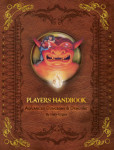 Wizards also hit up the nostalgia crowd by releasing premium edition hardback books of the most popular old rules sets. Last summer, the 1st edition core rulebooks were published in an elaborate format as part of a charity fundraiser for the Gygax memorial fund.
Wizards also hit up the nostalgia crowd by releasing premium edition hardback books of the most popular old rules sets. Last summer, the 1st edition core rulebooks were published in an elaborate format as part of a charity fundraiser for the Gygax memorial fund.
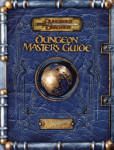 Next up (in September 2012) were the 3.5 Edition core books, done up in practically over-the-top production values making them closer to collector books than books for day to day use. Additional 3.5 Edition books, notably the Spell Compendium and the Magic Item Compendium, were rereleased in the late spring of 2013.
Next up (in September 2012) were the 3.5 Edition core books, done up in practically over-the-top production values making them closer to collector books than books for day to day use. Additional 3.5 Edition books, notably the Spell Compendium and the Magic Item Compendium, were rereleased in the late spring of 2013.
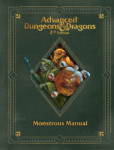 The latest editions to be rereleased are the 2nd edition AD&D books. The three core books were released in May of 2013. Like the 1st edition reprints, these have minimal new editing of the internal content, preserving the classic format and original black and white art.
The latest editions to be rereleased are the 2nd edition AD&D books. The three core books were released in May of 2013. Like the 1st edition reprints, these have minimal new editing of the internal content, preserving the classic format and original black and white art.
Hardbound Classic Adventures
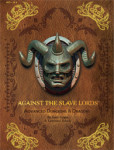 Significantly absent from the released PDF adventures were several classics from the early days of “basic D&D”. The explanation was soon seen when they appeared as their own hardcover reprints. The A series of modules, Against the Slave Lords, originally appeared as a tournament module (where players formed teams and tried to go through it as successfully as possible.) The book contains all three modules as well as a newly-written “bonus” prequel module to make a total of four. The other classic adventure pack is the S series of adventures. These four adventures aren’t necessarily linked together but each one is a high-risk, high-reward affair. Very deadly (to player characters), these dungeon crawls are all huge fan favorites. S1: Tomb of Horrors has perhaps the highest character kill rate of any module, while S3: Expedition to the Barrier Peaks has the dubious honor of being the first module to feature an alien spaceship complete with deadly inhabitants and over-the-top equipment to be had.
Significantly absent from the released PDF adventures were several classics from the early days of “basic D&D”. The explanation was soon seen when they appeared as their own hardcover reprints. The A series of modules, Against the Slave Lords, originally appeared as a tournament module (where players formed teams and tried to go through it as successfully as possible.) The book contains all three modules as well as a newly-written “bonus” prequel module to make a total of four. The other classic adventure pack is the S series of adventures. These four adventures aren’t necessarily linked together but each one is a high-risk, high-reward affair. Very deadly (to player characters), these dungeon crawls are all huge fan favorites. S1: Tomb of Horrors has perhaps the highest character kill rate of any module, while S3: Expedition to the Barrier Peaks has the dubious honor of being the first module to feature an alien spaceship complete with deadly inhabitants and over-the-top equipment to be had.
Video Games
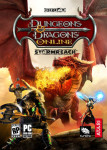 In the meantime, the electronic side of D&D has not been ignored. The massively-multiplayer online RPG (MMORPG), D&D Online, is still going strong with continual updates and expansions. It is loosely based on 3.5 edition and was initially set within the almost steam-punk world of Eberron. It now boasts additional content based on the (perhaps the most popular D&D setting) Forgotten Realms.
In the meantime, the electronic side of D&D has not been ignored. The massively-multiplayer online RPG (MMORPG), D&D Online, is still going strong with continual updates and expansions. It is loosely based on 3.5 edition and was initially set within the almost steam-punk world of Eberron. It now boasts additional content based on the (perhaps the most popular D&D setting) Forgotten Realms.
 On the other side of things, just this summer Neverwinter was released. This MMORPG is also free-to-play but according to the creators it is attempting to deliver more of a solo-player (with some player cooperation) exploration adventure along the lines of the Skyrim style of gameplay (as opposed to a heavily multiplayer cooperation game like World of Warcraft).
On the other side of things, just this summer Neverwinter was released. This MMORPG is also free-to-play but according to the creators it is attempting to deliver more of a solo-player (with some player cooperation) exploration adventure along the lines of the Skyrim style of gameplay (as opposed to a heavily multiplayer cooperation game like World of Warcraft).
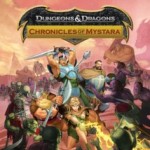 Finally, in a double-retro move, Dungeons & Dragons: Chronicles of Mystara has been released for the PC, PS3, and XBox 360. This is a compilation of two arcade games from the 90’s: Dungeons & Dragons: Tower of Doom and its sequel, Shadow Over Mystara. The games play like a classic coin-op arcade game, but have been upgraded in several ways. Most importantly for a co-op game like this, they can be played cooperatively via online gameplay. If you can’t gather three friends into your living room for a cooperative evening of videogaming, you can still enjoy the guilty pleasures of a 90’s Gauntlet style arcade crawl. While the original game is like so many others of its time, lining up 4 players vs a constant stream of enemies, it had several fairly unique features for its day. Characters had many special powers and spells and gained experience as they played. Items could be found or purchased in item shops, and the storyline had branching paths, some designated harder than others – depending on what sort of risk-reward path you wanted to take. For $15, the game is at a reasonable price point and well worth the expenditure for someone looking for a 90s arcade fix.
Finally, in a double-retro move, Dungeons & Dragons: Chronicles of Mystara has been released for the PC, PS3, and XBox 360. This is a compilation of two arcade games from the 90’s: Dungeons & Dragons: Tower of Doom and its sequel, Shadow Over Mystara. The games play like a classic coin-op arcade game, but have been upgraded in several ways. Most importantly for a co-op game like this, they can be played cooperatively via online gameplay. If you can’t gather three friends into your living room for a cooperative evening of videogaming, you can still enjoy the guilty pleasures of a 90’s Gauntlet style arcade crawl. While the original game is like so many others of its time, lining up 4 players vs a constant stream of enemies, it had several fairly unique features for its day. Characters had many special powers and spells and gained experience as they played. Items could be found or purchased in item shops, and the storyline had branching paths, some designated harder than others – depending on what sort of risk-reward path you wanted to take. For $15, the game is at a reasonable price point and well worth the expenditure for someone looking for a 90s arcade fix.
And That’s the News
Hopefully, you found the above at least slightly interesting. In the coming weeks I hope to continue the occasional post to bring more role-playing commentary/overviews (including mention of other, non-D&D rules systems) on a fairly irregular (but not too frequent) basis.





Discussion Area - Leave a Comment